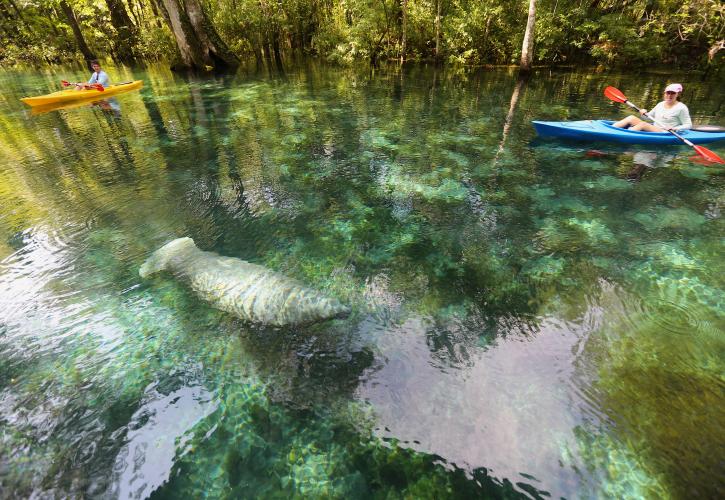Where does N attenuation happen along flow paths? In our new paper in Journal of Geophysical Research-Biogeosciences we close the catchment nitrate budget by measuring attenuation across land uses. We identify which N sources dominate inputs vs outputs. We demonstrate our approach using the catchment of Silver Springs, FL as a case study.
We introduce the PLAN model framework for water quality. The model can be applied consistently for point or nonpoint sources. The simple concept is based on the product of only four components for each source: population density or proportion of land cover, P; specific load, L; anthropogenic attenuation, A; and natural attenuation, N. The product of these components is computed for each source and then integrated at the basin scale.
The concise PLAN model framework predicted attenuation of 90% ± 3% of N inputs, in close agreement with the estimate based on measured spring mass discharge (87% ± 3%). Further, when this attenuation is disaggregated along the hydrological flow path, we estimate that 64% of inputs are lost in the surface soil, 20% in the vadose zone, and 6% in the aquifer. Livestock and human wastes were estimated to be the dominant contributors to spring N export, which was independently supported by isotopic data. The PLAN model is a simple, transferable framework that supports systematically computing N export based on proportioning of load and attenuation. Identifying the main sources of N ultimately contributing to discharged N loads is a critical step toward source‐related water‐quality management.

Figure 1. Contribution of specific N sources to (a) surface N inputs and (b) spring N export estimated from the catchment‐scale N budget. Sources were manure from livestock, agricultural and urban fertilizer, wastewater from septic tanks or centralized treatment facilities, atmospheric deposition, and biological nitrogen fixation from cultivated legumes.

Figure 2. Total mass of N exported along the hydrological flow paths through the landscape. LIN is the surface‐applied N, LL is the net N leached below the root zone after biogeochemical attenuation, LR is the net N recharged to groundwater after attenuation through the vadose zone, LpOUT is spring N export predicted from the PLAN model, and LmOUT is the measured spring N export.

Figure 3. Nitrate δ18O and δ15N measured in Silver Springs discharge (blue) and in SPFMs deployed under fertilized fields (green), horse and cattle pastures (brown), and peanut crops (gray) in the springshed. Discharge values were adjusted for enrichment during aquifer denitrification. Typical ranges of δ15N‐NO3− and δ18O‐NO3− adapted from Kendall et al. (2007) for nitrate sources from inorganic fertilizer, soil N, and manure and septic are shown by dashed lines with color consistent with corresponding SPFM data.
